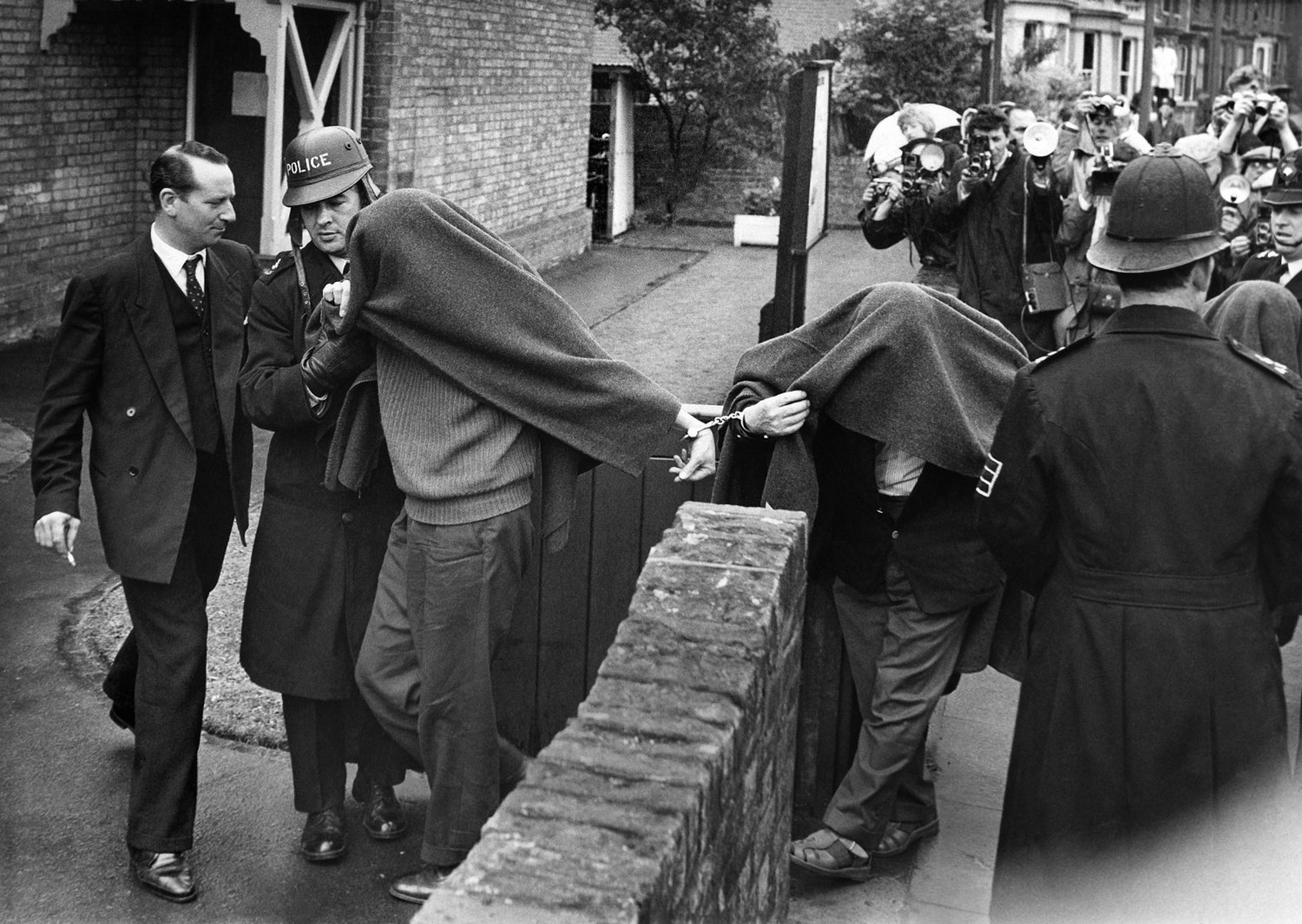Throughout history, daring criminals have pulled off audacious heists that captured the public’s imagination. These bold thieves managed to outwit sophisticated security systems and law enforcement to steal millions in cash, jewels, and priceless artifacts.
The most infamous heists often involved meticulous planning, inside knowledge, and innovative tactics to bypass seemingly impenetrable defenses. From the Antwerp diamond heist to the Isabella Stewart Gardner Museum theft, cunning masterminds exploited weaknesses and blindspots to execute their crimes.
While most perpetrators were eventually caught, some of history’s greatest heists remain unsolved mysteries to this day. The criminals behind these legendary capers continue to fascinate us with their ingenuity, nerve, and ability to vanish without a trace.
The Birth of Notorious Heists
The origins of audacious heists can be traced back to pioneering criminals who developed innovative techniques to outsmart security systems and law enforcement. These early masterminds laid the groundwork for future generations of daring thieves.
Pioneers of the Underworld
Adam Worth, known as the “Napoleon of Crime,” emerged as a prominent figure in the late 19th century. He orchestrated sophisticated robberies across Europe and America, including the theft of Thomas Gainsborough’s portrait of Georgiana, Duchess of Devonshire in 1876.
The Bonnot Gang, active in France from 1911 to 1912, revolutionized criminal tactics by using automobiles for quick getaways. Their high-speed escapes following bank robberies marked a new era in heist planning.
Willie Sutton, active from the 1920s to 1950s, earned fame for his bank robberies. He meticulously studied bank operations and used disguises to blend in, demonstrating the power of preparation and cunning.
Early Methods of Subterfuge
Criminals in the early 20th century employed various tactics to bypass security measures. Safe-cracking became an art form, with thieves developing specialized tools and techniques to crack increasingly complex locks.
Insider information proved crucial for many successful heists. Criminals often recruited bank employees or security personnel to gain valuable intel on schedules and vulnerabilities.
Disguises and impersonation played a significant role in early heists. Thieves would pose as maintenance workers, delivery personnel, or even law enforcement to gain access to secure areas.
Tunneling emerged as a popular method for accessing vaults. Criminals would rent nearby properties and dig underground passages, sometimes spending months on elaborate excavation projects.
Evolution of Security and Heists
As heists evolved, so did security measures. This sparked an ongoing battle of wits between criminals and law enforcement, driving innovation on both sides.
Technological Advancements
Security systems became increasingly sophisticated over time. Early bank vaults relied on thick steel doors and complex locks. By the mid-20th century, time-locked safes and alarm systems emerged.
The 1960s saw the introduction of closed-circuit television (CCTV) cameras. This technology allowed constant monitoring of secure areas.
In the 1970s, electronic keypads and access cards became common. These replaced traditional keys, making unauthorized entry more difficult.
The digital age brought biometric scanners and advanced encryption. Fingerprint and retinal scans added layers of protection to high-security facilities.
The Criminals’ Innovations
Thieves adapted their methods to counter new security measures. Some groups recruited insiders with access to secure areas. This bypassed many physical barriers.
Tech-savvy criminals developed tools to jam alarm systems and disable cameras. Others used social engineering tactics to manipulate employees.
In recent years, cybercrime has become a major threat. Hackers target digital vulnerabilities in financial systems. They can steal millions without ever setting foot in a bank.
3D printing technology allowed criminals to create exact replicas of keys and access cards. This made it easier to fool electronic locks and scanners.
Notable Heists of the 20th Century
The 20th century witnessed some of the most daring and sophisticated heists in history. These crimes captivated the public imagination and showcased the ingenuity of criminal masterminds.
The Great Train Robbery
On August 8, 1963, a gang of 15 robbers targeted a Royal Mail train in Buckinghamshire, England. They made off with £2.6 million (equivalent to over £50 million today) in used banknotes.
The gang, led by Bruce Reynolds, meticulously planned the operation for months. They tampered with trackside signals to stop the train and overwhelmed its crew.
The robbers escaped to a nearby farmhouse to divide the loot. Most were eventually caught and sentenced to lengthy prison terms. However, Ronnie Biggs, one of the gang members, famously escaped from prison and evaded capture for decades.
The Antwerp Diamond Heist
In February 2003, a group of Italian thieves known as “The School of Turin” pulled off one of the largest diamond heists in history. They stole an estimated $100 million worth of diamonds, gold, and other jewelry from the Antwerp Diamond Center in Belgium.
The thieves rented office space in the building months in advance to study its security systems. They used expert locksmithing skills to bypass multiple layers of protection, including a foot-thick steel door and infrared heat detectors.
The vault’s contents were thought to be impenetrable, yet the robbers managed to empty 123 of its 160 safety deposit boxes. The majority of the stolen goods were never recovered, and only one member of the gang was convicted.
Masterminds of the Modern Era
The digital revolution has given rise to a new breed of criminal masterminds who leverage technology for audacious heists. These contemporary thieves employ sophisticated cyber tactics and exploit vulnerabilities in digital systems.
Digital Age Deceptions
Albert Gonzalez orchestrated one of the largest credit card theft operations in history. From 2005 to 2007, he hacked into retail networks, stealing over 170 million card numbers. Gonzalez’s methods included SQL injection attacks and installing malware on point-of-sale systems.
The Carbanak gang, active since 2013, targeted banks worldwide using spear-phishing emails. They gained remote access to bank computers, manipulating account balances and ATM systems. The group stole an estimated $1 billion from financial institutions across 40 countries.
Cyber Heists and Crypto-Thefts
In 2016, hackers breached Bangladesh Bank’s systems, attempting to steal $1 billion through fraudulent SWIFT transfers. While most transactions were blocked, $81 million was successfully transferred to accounts in the Philippines and Sri Lanka.
The 2018 Coincheck hack saw cybercriminals steal $534 million worth of NEM cryptocurrency. Exploiting security flaws in the exchange’s hot wallet system, it remains one of the largest crypto heists to date.
North Korean state-sponsored hackers have emerged as prolific crypto thieves. The Lazarus Group is linked to numerous attacks on cryptocurrency exchanges, including a $281 million theft from KuCoin in 2020.
Psychological Profile of a Mastermind
Criminal masterminds possess unique psychological traits that enable them to plan and execute complex heists. Their mindset blends strategic thinking with a belief in their ability to outsmart security systems and law enforcement.
Traits of a Criminal Mastermind
Criminal masterminds often exhibit high intelligence and exceptional problem-solving skills. They tend to be meticulous planners, paying attention to the smallest details.
These individuals frequently display narcissistic tendencies, believing themselves to be superior to others. This inflated self-image fuels their confidence in pulling off elaborate schemes.
Masterminds typically have excellent social skills, allowing them to manipulate and persuade others. They may use charm or intimidation to recruit accomplices and gather information.
Risk-taking behavior is common among criminal masterminds. They thrive on the adrenaline rush of dangerous situations and are willing to take calculated risks.
The Illusion of the Perfect Crime
Many criminal masterminds believe they can commit the perfect crime, leaving no evidence and evading capture. This belief stems from overconfidence in their abilities and underestimation of law enforcement.
They often spend months or years planning a heist, convinced that their meticulous preparation will guarantee success. This illusion of control can lead to overlooking critical details or unexpected variables.
The desire for recognition sometimes compels masterminds to leave subtle clues or signatures at crime scenes. This need for acknowledgment can ultimately contribute to their downfall.
Despite their belief in a flawless plan, most criminal masterminds eventually face capture. The complexity of their schemes often increases the likelihood of mistakes or oversights.
Global Impact and Law Enforcement Response
Major heists have prompted international collaboration and technological advancements in crime-fighting. Law enforcement agencies worldwide have had to adapt their strategies to counter increasingly sophisticated criminal operations.
International Cooperation
Interpol has played a crucial role in coordinating cross-border investigations of high-profile heists. The organization facilitates information sharing and joint operations among member countries.
The creation of specialized task forces has improved the tracking of stolen assets across international boundaries. These teams combine expertise from multiple agencies to pursue criminal networks globally.
Bilateral agreements between nations have streamlined extradition processes for suspects involved in major thefts. This cooperation has reduced safe havens for fugitives and increased the likelihood of successful prosecutions.
Advances in Forensic Science
DNA analysis has revolutionized the investigation of heists, allowing authorities to identify suspects from minute traces of evidence left at crime scenes. This technology has led to breakthroughs in solving cold cases.
Digital forensics has become essential in unraveling complex financial crimes. Experts can now trace electronic transactions and recover deleted data, providing crucial evidence in court.
Improved surveillance technologies, such as high-resolution cameras and facial recognition software, have enhanced the ability to monitor high-value targets and identify perpetrators. These tools have both preventive and investigative applications.
3D crime scene reconstruction has enabled investigators to analyze heist locations with unprecedented detail. This technology allows for virtual walkthroughs and helps identify overlooked evidence.
Cultural Influence and Public Fascination
High-profile heists have captivated the public imagination for decades, shaping perceptions of crime and criminals in popular culture. These daring robberies often blur the lines between fact and fiction, creating larger-than-life figures and inspiring countless stories.
Media Portrayal and Mythmaking
News coverage of audacious heists frequently sensationalizes the criminals’ exploits, portraying them as cunning masterminds. This media attention can inadvertently glorify their actions, turning thieves into anti-heroes or folk legends.
Hollywood has further cemented this romanticized image through films like “Ocean’s Eleven” and “The Italian Job”. These movies often depict heists as elaborate puzzles solved by charismatic criminals, downplaying the real-world consequences.
True crime documentaries and books also contribute to the mythmaking process. They delve into the planning and execution of famous robberies, sometimes inadvertently providing a blueprint for aspiring criminals.
Influence on Popular Culture
The allure of heists has permeated various forms of entertainment. Video games like the “Grand Theft Auto” series allow players to simulate criminal activities, including elaborate robberies.
Television shows such as “Money Heist” and “Leverage” have gained massive followings by portraying clever thieves as protagonists. These narratives often explore themes of wealth inequality and justice, adding complexity to the heist genre.
Heist-inspired fashion and slang have entered mainstream culture. Terms like “inside job” and “mastermind” have become part of everyday language, reflecting the impact of these crimes on society.
References
- FBI (n.d.) – The Great Train Robbery: A Case Study in Criminal Mastery Link
- Smithsonian Magazine (n.d.) – The Antwerp Diamond Heist: How Thieves Stole $100 Million in Gems Link
- Interpol (n.d.) – International Task Forces on High-Value Art and Jewel Heists Link
- British Museum (n.d.) – Unsolved Heists: The Isabella Stewart Gardner Museum Theft Link
- National Geographic (n.d.) – Cyber Heists: The Evolution of Digital-Age Robberies Link




